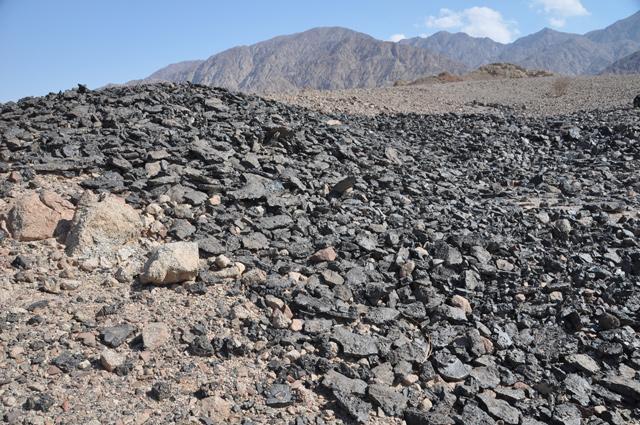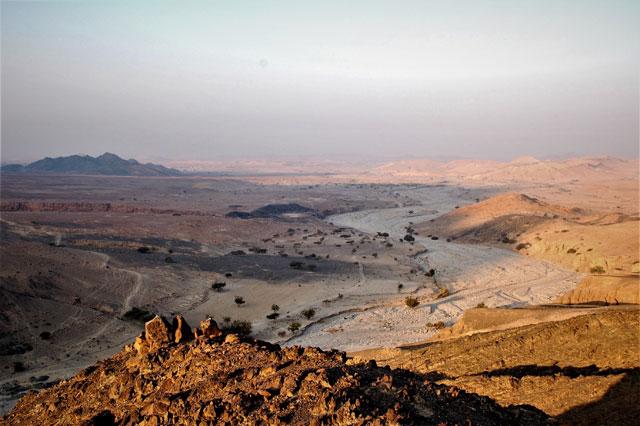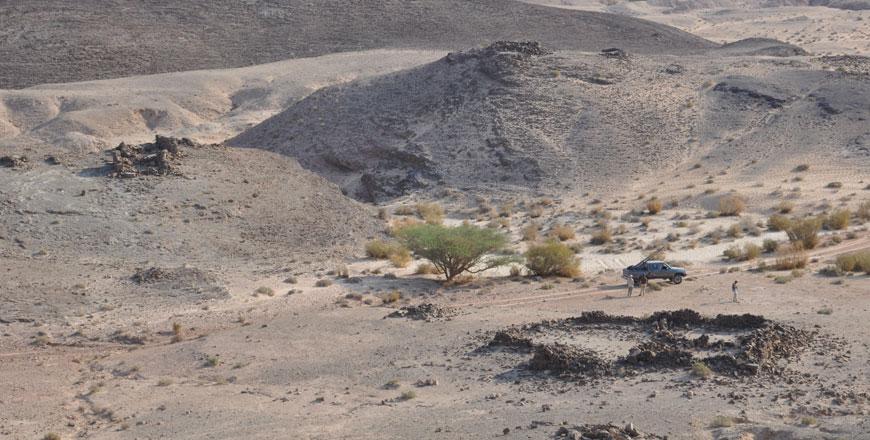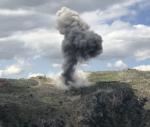You are here
Jordan’s ‘only’ Early Islamic copper smelting site located south of Dead Sea — scholar
By Saeb Rawashdeh - Sep 29,2019 - Last updated at Sep 29,2019

Looking east over an Early Islamic period copper slag mound at Khirbat Al Mana’iyya (Photo courtesy of Thomas E. Levy)
AMMAN — The first and only Early Islamic period copper smelting site found in Jordan is located in Wadi Araba, an area south of the Dead Sea called Khirbat Al Mana’iyya, according to a former ACOR-CAORC archaeologist.
“Most of the copper resources in southern Wadi Araba are on the Palestinian side of the modern border, so the smelting sites are concentrated over there,” Ian Jones said, adding that researchers from UC San Diego Edom Lowlands Regional Archaeology Project, led by Thomas Levy and Mohammad Najjar excavated the site.
Khirbat Al Mana’iyya seems to have been an appealing location because it was close to both timber and water resources, likely facilitating transport of ore to the site.
“On the wood resources, interestingly, the archaeo-botanist who works with us found that the smelters were mostly using dead wood, rather than cutting down live trees,” the scholar noted.
“This is also a strategy that has been documented among modern Bedouins in Sinai,” the archaeologist elaborated, adding that “it makes sense that Early-Islamic copper producers would have adopted similar strategies, since southern Wadi Araba is so arid and timber resources are scarce”.
“Another aspect that I’ve been working on is the chronology of production, and what that means for our understanding of the Early Islamic political economy in southern Jordan,” said Jones, adding that the southern Wadi Araba copper production sites were almost certainly associated with Ayla, the Early Islamic name for Aqaba.
According to the scholar, it is generally assumed that the copper production sites were active during most of that period, probably becoming more active as Aqaba became a more significant port during the 9th and 10th century.
However, their work indicated that copper production was important to Ayla’s economy for a much briefer period than scholars had previously thought, and that it became less important as Ayla became a significant Red Sea port.
Radiocarbon and ceramic evidence from Khirbat Al Mana’iyya and a number of other areas showed that the copper production sites were founded either in the mid-8th century or at the beginning of the Abbasid period and probably only lasted into the early 9th century, Jones explained.
The decline of copper production may be related to the changes of the elite landholding system during the reign of Harun Al Rashid, the fifth Abbasid Caliph, at the end of the 8th century, the scholar said.
“This may have eliminated the motivation to mine fairly small deposits like the ones in southern Wadi Araba.”
Related Articles
AMMAN — “We do not possess enough primary sources about the contribution of the copper mining sector to the economy of the Ayyubid-Mamluk dy
AMMAN — Cutting wood for metal smelting was vital for inhabitants through different ages as the process of reforesting would take a long tim
AMMAN — Researchers are digging up hints of an important Ayyubid copper production site in Wadi Al Ghuwaybi, an American anthropological arc



















